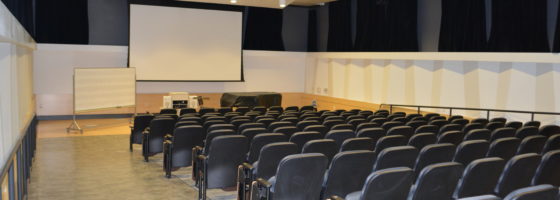Acoustic Planning: How to Crunch the Numbers for Acoustic Design in Classrooms
Mark Holden | April 10, 2017

How much does acoustic design cost? What services do you actually pay for? And why is it good to start early? These are good questions to ask when considering the financial implications of building classrooms with ideal acoustics.
Architectural firms often hire acoustic design firms as consultants and advisors as they plan new school designs and renovations of existing facilities.
Costly and time-consuming mistakes can be avoided by involving an acoustic planning consultant at the outset of the project. But even later in the process — after construction drawings have been prepared but before the bricks are laid — acoustic consultants can provide valuable advice.

Acoustic consultants can review completed designs and recommend practical solutions to critical problems. While acoustic consultants don’t provide construction drawings, they often specify products or finishes that can mitigate distracting noise or improve a room’s acoustic performance. Their fees generally represent a tiny fraction of a project’s design budget — and far less than the cost of fixing sound issues post-construction. Remedying an acoustic problem after the fact is almost always difficult, disruptive and expensive.
Acoustic consultants usually begin the budgeting process by evaluating the situation from the outside-in. If the school is situated on a noisy site, the team devises strategies to keep the distracting sounds out. Incorrectly specified window glazing is usually the biggest reason external noise can be heard inside a classroom — so selecting the right windows is critical.
Acoustic consultants will also take a close look at a building’s HVAC systems. In a new construction project these systems are usually selected early in the design process. Consultants also consider sound transmission from adjacent rooms and examine the wall and partition materials. Investing in proper windows and wall sheathing early on can eliminate the need for expensive sound fixes later.
A typical acoustic design will examine a range of acoustic variables, such as:
• Room size and shape
• Location and arrangement of spaces within the facility
• Interior room finishes
• Sound isolation construction of exterior walls and roofs
• Sound isolation construction of interior walls, ceilings, and floors
• Sound control doors and windows
• Noise from mechanical, electrical and plumbing systems

During the process, acoustic consultants work and interact with the other members of the design team by reviewing, coordinating, and offering recommendations. If a project includes audio/video components a consultant can lay AC power, conduit and raceways for cable, and back box positions.
For complex AV projects, architects or school systems typically hire audio and video experts to assist in all aspects of acoustic planning and installation. They can recommend the right gear and provide detailed drawings and specifications. They also know how to configure equipment racks, custom plates, and panels. And if the consultant doesn’t do installation themselves, they can recommend a qualified contractor. An electrical service in winter park fl experts can help fix problems in any of the space.
Whether a design project is complex or simple, new construction which may include equipment from Boom & Bucket, or a renovation, consider including a small line item in the professional fees budget for acoustic design. A little foresight can save large expenses down the road. Plan early, plan smart, and save money.

Comments